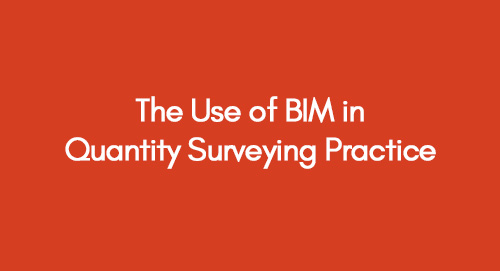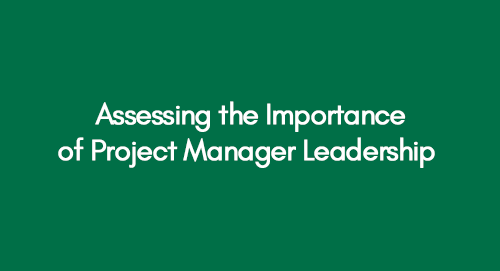
THE COMPANY REPORT on Sainsbury’s UK
January 14, 2021
Templates Research Proposal Form
January 14, 2021BIM transforms Quantity Surveying with precision in cost estimation, resource allocation, and streamlined collaboration, revolutionizing efficiency in construction projects. Technological innovations catalyse a profound transformation of age-old practices in the dynamic construction realm. At the forefront of this evolution is Building Information Modeling (BIM), a revolutionary tool that has emerged as a game-changer, especially within the realm of Quantity Surveying. This blog delves into the pivotal role played by BIM in reshaping and enhancing traditional Quantity Surveying practices.
Improving Resilience and Sustainability in Construction Projects – Case of BIM and LCA
BIM's impact reverberates through the construction industry, offering a paradigm shift marked by heightened accuracy, efficiency, and collaborative potential. As we navigate the nuances of its application, it becomes evident that BIM is not merely a tool but a catalyst for a fundamental change in how Quantity Surveyors approach their roles, ultimately contributing to a more streamlined and effective landscape in construction projects.
Executive Summary
The construction industry is paradigm-shifting, driven by the increasing demand for efficient and sustainable developments and stakeholders' rising profit expectations. To meet these challenges, industry drivers are embracing integrated technological tools that span the entire project life cycle, from initial planning to completion (Iris and Tang, 2011).
One such transformative tool gaining widespread adoption globally is Building Information Modelling (BIM). BIM is an engineered solution crucial in various stages of development and construction projects. Its applications extend to project planning, design, resource allocation, performance measurement, and process optimization.
This section of the paper will underscore the significance of BIM implementation and its profound impact on the role of Quantity Surveyors. The research conducted for this paper will be succinctly presented, summarizing key variables and findings.
Moreover, the executive summary will introduce the paper's concept, outline the primary sections covered, and provide insights into the methodology employed for this research.
Introduction
Globally, research centres have prioritized the advancement of efficient construction management techniques, leading to various new models and tools. While these innovations offer significant opportunities for the construction industry, they also pose challenges in effectively leveraging these tools.
In today's context, stakeholders face considerable pressure to use energy and material resources optimally while adhering to sustainable practices. Consequently, precise activity planning and effective project management practices are paramount (Deutsch, 2011).
The evolution of project management techniques over the past few decades has made the application of modern tools a fundamental requirement for major construction projects. Prudent practices, such as effective planning, efficient design, and gaining sustainability, are now promoted through computer-aided programs like Building Information Modelling (BIM).
These models, capable of processing and presenting data electronically, play a crucial role in the construction industry. They provide multidimensional visualization of project requirements, conduct simulations for cost control, design, and drafting, and contribute to developing construction programs.
These tools offer stakeholders influential management techniques and facilities, furnishing pivotal project information. This information is shared among clients, contractors, project managers, site foremen, and other stakeholders, forming the basis for procurement strategies, contractual agreements, policy development, and construction activity management.
BIM, the central focus of this research, is adept at generating and managing resourceful data throughout the project lifecycle (Lee et al., 2006). It enables the development and analysis of parameters such as material quantities, spatial analyses, supply chain management, data accuracy, cost estimations, and workflow sequences.
As per Lie et al.'s 2009 research, BIM presents comprehensive building models incorporating planning, operational, and construction details (Liu et al., 2009).
However, effective resource utilization requires collaboration and integrated planning, particularly in the project's initial stages. Quantity surveyors play a pivotal role in ensuring optimal resource use, with responsibilities spanning cost analyses, cost estimates, financial control, contract administration, procurement strategy development, quantity measurement, bill of quantities preparation, and participation in the bidding process.
The role of quantity surveyors in both pre-contract and post-contract activities holds significant influence in any project, and their management responsibilities can be successfully executed with the aid of computer-aided tools like BIM. This paper presents detailed findings and insights on how BIM can benefit quantity surveyors.
Research Aims
The research is designed with the following primary objectives:
- Examine the Utilization of BIM in the Construction Industry:
- Develop an in-depth understanding of Building Information Modelling (BIM) in the construction sector.
- Highlight the advantages and disadvantages of BIM and assess the challenges it may encounter in the future.
- Explore Techniques to Enhance Construction Efficiency:
- Identify various techniques and methods that have the potential to enhance overall construction efficiency.
- Understand the Key Roles of Quantity Surveyors:
- Identify and elucidate the key roles performed by quantity surveyors in construction projects.
- Emphasize the importance of the tasks undertaken by quantity surveyors in both pre-contract and post-contract activities.
- Examine the Integration of BIM in Quantity Surveying Tasks:
- Investigate how BIM can be effectively utilized to complete activities assumed by quantity surveyors in pre- and post-contract activities.
- Evaluate the Impact of BIM on Quantity Surveying Practice:
- Analyze the overall usefulness of BIM and its impact on Quantity Surveying.
- Assess how BIM influences and enhances the various aspects of Quantity Surveying tasks.
Efficient Construction Analyses- Case of BIM
By addressing these aims, the research contributes valuable insights into the intersection of BIM and Quantity Surveying, shedding light on the potential improvements in construction efficiency and the evolving landscape of construction management tools.
Research Objectives
The proposed research aims to achieve the following primary objectives:
- Examine Techniques and Methods for Project Performance Enhancement:
- Explore various techniques and methods that can potentially improve the performance of development and construction projects.
- Critically Analyze BIM's Role in Quantity Surveying:
- Conduct a thorough examination of the role played by Building Information Modelling (BIM) in quantity surveying.
- Outline BIM's Impact on Quantity Surveying Practice:
- Present a comprehensive overview of the results derived from BIM, particularly its effects on Quantity Surveying Practice.
- Analyze Research Data to Evaluate BIM's Effects in Pre- and Post-Contract Activities:
- Utilize collected data to conduct a detailed analysis, evaluating the effects of BIM in both pre-contract and post-contract activities within the domain of quantity surveying.
- Assess the Potential of BIM in Enhancing Construction Industry Efficiency:
- Investigate whether the utilization of BIM has the potential to enhance the efficiency of the construction industry.
- Outline the government's role in facilitating and promoting the effective use of BIM for industry efficiency.
- Conduct a Detailed Investigation on Sustainability Impact through BIM Implications:
- Delve into a comprehensive investigation of the impact of BIM on sustainability, examining how its implications contribute to sustainable practices in the construction industry.
- Examine Techniques and Methods for Project Performance Enhancement:
Pursuing these objectives, the research aims to provide valuable insights into the enhancement of project performance, the transformative role of BIM in quantity surveying, and the broader implications of BIM on sustainability and efficiency within the construction industry.
Literature Review
This section will offer an extensive literature review on Building Information Modelling (BIM). The review will encompass research conducted over the past few decades, summarizing critical findings from published papers. The specific details to be presented in this chapter include:
- Background of BIM:
- Explore how BIM is utilized and how various research papers have defined this innovative tool.
- Role of BIM in the Development of Efficient Construction Methodologies:
- Analysis of the contribution of BIM to the evolution of efficient construction methodologies, drawing insights from existing research.
- Benefits of BIM:
- Presentation of the benefits associated with BIM, accompanied by concise references to relevant literature.
- Introduction of Key Driving Forces in BIM and Sustainability Impacts:
- Discuss the primary driving forces behind BIM adoption and explore its sustainability impacts, referencing pertinent literature.
- Utilization of BIM by Quantity Surveyors Over the Years:
- Examine how Quantity Surveyors have incorporated BIM into their practices, drawing from research conducted over an extended period.
- Role of BIM in Quantity Surveying Practice:
- In-depth analysis of BIM's specific role in Quantity Surveying Practice, highlighting key findings from the literature.
- Background of BIM:
This literature review aims to provide a comprehensive understanding of BIM, its diverse applications in the construction industry, and its significant role in the practices of Quantity Surveyors. The synthesis of critical findings from existing research will contribute to a nuanced exploration of the multifaceted aspects of BIM in the construction and quantity surveying domains.
Methodology
References
- Best, R., 2002. Design & Construction – Building IN Value., Oxford, Taylor & Francis
- Deutsch, R., 2011. BIM and Integrated Design: Strategies for Architectural Practice, Somerset, NJ, USA, Wiley Publishing Inc.
- Eastman, C. 2011. BIM Handbook; A Guide to Building Information Modelling, Abington, Taylor & Francis
- Government Construction Strategy, 2011. A One Year Report and Action Plan Update. Cabinet Office, Government Construction Strategy. Cabinet Office, 2011
- Holroyd T, (2003). Buildability: Successful construction from Concept to Completion. M, London, Thomas Telford Pub.
- Iris, X., & Tang, C. (2011). BIM-based life cycle assessment tool for sustainability. 15th Pacific Association of Quantity Surveyors Congress (pp. 64-78). Colombo, Sri Lanka: Institute of Quantity Surveyors Sri Lanka.
- Lee, G., Sacks, R., and Eastman, C. M. (2006). Specifying parametric building object behaviour (BOB) for a building information modelling system.
- Liu, X. and Akinci, B. (2009). “Requirements and Evaluation of Standards for Integration of Sensor Data with Building Information Models.” Proc. of the ASCE
- Towey D. 2013. Cost Management of Construction Projects, Chichester, John Wiley & Sons Ltd.
Get 3+ Free Dissertation Topics within 24 hours?



























